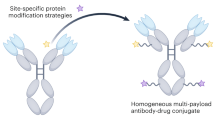Abstract
The multidrug resistance (MDR) phenotype is presumed to be mostly dependent on changes in the resistant cell plasma membrane, notably the emergence of a 170 kDa glycoprotein called P-glycoprotein, which facilitate increased drug efflux. We have previously demonstrated that ATP-enhanced binding of vincristine (VCR) to plasma membrane vesicles is much greater in MDR than in wild type cells. The present study has shown that VCR binding to MDR Ehrlich ascites tumour cell plasma membrane vesicles is inhibited 50% most efficiently by quinidine (0.5 microM) followed by verapamil (4.1 microM) and trifluoperazine (23.2 microM). This is the reverse order of the effect on whole cells where a ranking of efficiency in terms of enhancement of VCR accumulation, inhibition of VCR efflux, DNA perturbation and modulation of resistance in a clonogenic assay, was trifluoperazine greater than or equal to verapamil much greater than quinidine. The detergent Tween 80 inhibited VCR binding to plasma membrane vesicles at 0.001% v/v which agreed with the level which modulated resistance and increased VCR accumulation in whole cells. No effect was observed on daunorubicin binding to MDR plasma membrane vesicles after incubation with either Tween 80 (up to 0.1% v/v) or verapamil (up to 25 microM). We conclude that the effect of a modulating drug in reversing resistance to VCR correlates with its ability to raise intracellular VCR levels but not with its capability to inhibit VCR binding to the plasma membrane. Thus, enhancement of VCR accumulation in MDR cells is hardly solely due to competition for a drug binding site on P-glycoprotein. Furthermore, the lack of a demonstrable effect on daunorubicin binding to the plasma membrane by modulators points to transport mechanisms which do not utilise specific drug binding to the plasma membrane.
This is a preview of subscription content, access via your institution
Access options
Subscribe to this journal
Receive 24 print issues and online access
$259.00 per year
only $10.79 per issue
Buy this article
- Purchase on Springer Link
- Instant access to full article PDF
Prices may be subject to local taxes which are calculated during checkout
Similar content being viewed by others
Author information
Authors and Affiliations
Rights and permissions
About this article
Cite this article
Sehested, M., Jensen, P., Skovsgaard, T. et al. Inhibition of vincristine binding to plasma membrane vesicles from daunorubicin-resistant Ehrlich ascites cells by multidrug resistance modulators. Br J Cancer 60, 809–814 (1989). https://doi.org/10.1038/bjc.1989.371
Issue Date:
DOI: https://doi.org/10.1038/bjc.1989.371
This article is cited by
-
Enhanced Killing Effect of Nanosecond Pulse Electric Fields on PANC1 and Jurkat Cell Lines in the Presence of Tween 80
The Journal of Membrane Biology (2012)
-
Comparison of cyclosporin A and SDZ PSC833 as multidrug-resistance modulators in a daunorubicin-resistant Ehrlich ascites tumor
Cancer Chemotherapy and Pharmacology (1992)



